Can I Add Hot Water Radiant Floor Heat to My Home?
 In homes that are heated by a central hot water boiler, we work on many systems that have a combination of both hot water baseboard heaters and radiant floor heating. Interestingly, we have found that many homeowners who have only baseboard heaters in their homes assume that the only option for having radiant floor heat was when the house was first built. The thought of potentially adding radiant floor heating to their current homes is often summarily dismissed.
In homes that are heated by a central hot water boiler, we work on many systems that have a combination of both hot water baseboard heaters and radiant floor heating. Interestingly, we have found that many homeowners who have only baseboard heaters in their homes assume that the only option for having radiant floor heat was when the house was first built. The thought of potentially adding radiant floor heating to their current homes is often summarily dismissed.
In some cases, however, this may actually be possible. In this blog, we’d like to take a closer look at ways to add hot water radiant floor heating to existing homes that have a boiler system.
What Is Hot Water Radiant Floor Heating?
Hot water radiant floor is a type of heating option that uses hot water from a central boiler to heat the flooring in your home – a very popular home comfort option with homeowners that have hydronic (water-based) systems. There are a variety of ways that radiant floor heating can be installed, but the common factor in all cases is that warm water from the boiler is pumped through a circuit of equally spaced, special tubing installed below the floor around the entire room, or zone. The temperature of this water is fairly moderate, as compared with the hot water that’s pumped through baseboard heaters and radiators, avoiding over-heating and wide temperature swings, for starters. Warmth radiated from the tubing is directed upward, providing consistent, uniform comfort at floor level in all areas of the room.
As with the baseboard heaters installed in different parts of your home, radiant floor heating is setup as an independent, thermostatically controlled comfort zone, providing the same benefits as other types of zoned heaters, and more.
Benefits of Radiant Floor Heat
- Uniform heating around the entire room
- Efficient heat delivery, at floor-level where it’s needed most
- Warm floors ideal are for cold climates like ours!
- Avoids dust and cleaning issues associated with conventional baseboard heaters
- Doesn’t take up valuable wall space or floor space that baseboard heaters or radiators require
- Very quiet heat delivery
- When installed in a radiant slab, consistent temperature is efficiently maintained 24/7
- Is installed as an independent comfort zone with its own thermostat
Types of Hot Water Radiant Floor Installations
Generally speaking, there are two main types of hot water radiant floor heat delivery systems. The first category are those that have tubing installed in a concrete or similar poured slab material, with the flooring installed on top of the slab. The second category are those where the tubing is secured below (or in some cases, above) wood subflooring in a more conventional, framed lumber scenario. In all cases, insulation is installed below the radiant tubing, directing warmth upward to the finished flooring above. In the case of poured slabs on grade, the earth below serves as natural insulation.
Radiant Floor Tubing & Thermal Panels
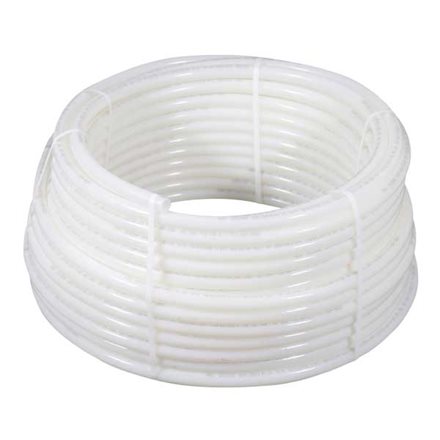 While the tubing used in radiant floor heating applications in the past has varied from products such as simple copper tubing to different formulations of rubber and plastic, the plastic tubing known generically as PEX – shorthand for ‘cross-linked polyethylene’ – has gained industry-wide acceptance due to its successful use in radiant heating applications in the U.S. and Europe for over 35 years. Regarding the types and sizes of PEX tubing available for residential applications, we’ll leave those details to your trusted plumbing and heating specialist to discuss with you when looking closer at your specific job. Note, for heating applications such as this, using tubing that has an oxygen barrier (to prevent corrosion in the system) is just one crucial tubing factor.
While the tubing used in radiant floor heating applications in the past has varied from products such as simple copper tubing to different formulations of rubber and plastic, the plastic tubing known generically as PEX – shorthand for ‘cross-linked polyethylene’ – has gained industry-wide acceptance due to its successful use in radiant heating applications in the U.S. and Europe for over 35 years. Regarding the types and sizes of PEX tubing available for residential applications, we’ll leave those details to your trusted plumbing and heating specialist to discuss with you when looking closer at your specific job. Note, for heating applications such as this, using tubing that has an oxygen barrier (to prevent corrosion in the system) is just one crucial tubing factor.
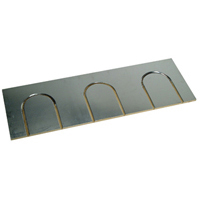 Depending on the type of radiant heating you install, there are a variety of methods used for securing the bare tubing, or the thermal panels the tubing are often laid in, during the installation process. Your plumber may use plastic zip ties, special clips, or other manufacturer-approved means to attach the tubing or thermal panels to the wire mesh or rebar used when preparing to pour a slab, or when installing them beneath or above a subfloor.
Depending on the type of radiant heating you install, there are a variety of methods used for securing the bare tubing, or the thermal panels the tubing are often laid in, during the installation process. Your plumber may use plastic zip ties, special clips, or other manufacturer-approved means to attach the tubing or thermal panels to the wire mesh or rebar used when preparing to pour a slab, or when installing them beneath or above a subfloor.
Regarding thermal panels, depending on the installation, it may end up being more efficient and cost-effective to employ partial or full use of these products. Radiant floor thermal panels are helpful in laying, spacing, and anchoring the tubing, as well as in helping to efficiently and uniformly radiate heat. Whether thermal panels should be used in your particular installation should be addressed with your trusted plumbing and heating contractor.
Adding Radiant Floor Heat to an Existing Home
Hot water radiant floor heating is often installed during the initial construction of a home that’s going to be heated by a central boiler, but this doesn’t mean that it flat-out cannot be retrofitted into an existing home. Under the right conditions, such as if the house has an unfinished basement, if there’s a major remodel happening, or when building an addition, it may be possible to change over certain areas to radiant floor heating without creating huge amounts of extra aggravation and expense – not to mention consider radiant floor heat for the new finished space.

Installing Radiant Floor Tubing Via an Unfinished Space Below
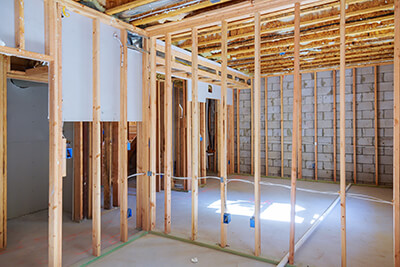 If existing living space in your home is located above an unfinished area, such as a main floor located above an unfinished basement, radiant floor tubing can often be installed between the open framing in the ceiling of the basement, providing radiant floor heat for the main floor above. The tubing or thermal panels are attached to the plywood subfloor from below and then insulation is added below the tubing. If, or when, the basement is converted into finished living space, the radiant floor heating for the floor above is unaffected.
If existing living space in your home is located above an unfinished area, such as a main floor located above an unfinished basement, radiant floor tubing can often be installed between the open framing in the ceiling of the basement, providing radiant floor heat for the main floor above. The tubing or thermal panels are attached to the plywood subfloor from below and then insulation is added below the tubing. If, or when, the basement is converted into finished living space, the radiant floor heating for the floor above is unaffected.
Installing Radiant Tubing During a Major Remodel
If you are having a major remodel performed on your home, this opens up opportunities to add radiant floor heating to the upper levels, as well as the main floor. By accessing an upper-level floor from unfinished or opened-up space below, your heating installer can install tubing or thermal panels for the upper floor using the same method described right above.
In other cases, it may instead be more appropriate to install the tubing or panels on top of the upper level subfloor, before the upstairs flooring is installed. This method typically requires additional carpentry work before the final flooring is put down.
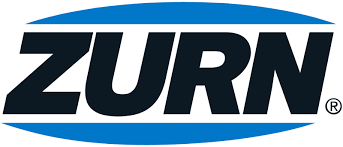
Adding Radiant Floor Heating To An Addition
For homeowners who are adding on to an existing home that’s heated by a boiler, one of the first heating ideas that often comes up is that radiant tubing can be installed in a slab on the main level. This can even be done on other levels, so long as the addition’s framing is engineered to support the weight of the slab material (concrete or similar) being used. For upper levels of an addition, the other methods mentioned above may prove to be a more expedient and cost-effective approach.
What About Your Existing Boiler’s Heating Capacity?
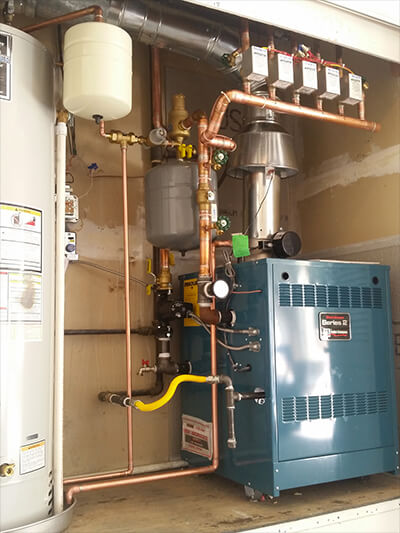 Whenever adding more finished space to a home and an existing comfort system, it is often necessary to run a new heat load calculation to determine if the existing equipment can handle the updated heating needs of the home. We find that in some cases, if the new finished square footage is not too significant, the existing system will get by just fine. However, we’d be kidding our readers if we didn’t admit that in several of the examples presented in this blog, replacing the existing boiler may be necessary in order to easily and comfortably handle the coldest periods we experience during the winter.
Whenever adding more finished space to a home and an existing comfort system, it is often necessary to run a new heat load calculation to determine if the existing equipment can handle the updated heating needs of the home. We find that in some cases, if the new finished square footage is not too significant, the existing system will get by just fine. However, we’d be kidding our readers if we didn’t admit that in several of the examples presented in this blog, replacing the existing boiler may be necessary in order to easily and comfortably handle the coldest periods we experience during the winter.
Our company philosophy is strongly rooted in providing our customers with lots of information, and open, honest communication. We never tell a customer they need new equipment unless we feel that is the only logical course of action. All advice, recommendations, and proposals that our team presents are provided in a low-pressure, professional manner, and all questions are gladly answered, fully and patiently.


Consider Adding Hot Water Radiant Floor Heating in Your Denver-Boulder Home!
Regardless of the size and scope of the radiant floor heating application you may be considering, our team urges you to take the time to learn about and research the products and installation methods that are being recommended for your home. Ask plenty of questions and don’t make a purchasing decision until you’re fully equipped to make an informed decision, one that you’ll feel good about for many years to come.
Our team at Save Home Heat Company has been on the front lines of hot water radiant floor home heating for more than 40 years, consistently serving homeowners in the Denver-Boulder metro area. In all radiant floor installations, service, and repair work that we perform, we use only the highest quality products, and strictly follow all manufacturer and code requirements.
Our expert plumbing team brings decades of experience in all facets of residential hot water home heating to the table, and like our entire staff at Save Home Heat, is dedicated to providing our customers with dependable, trusted, professional advice, recommendations, and service.
To learn more about hot water radiant floor heating for your Denver-Boulder area home, or for any of your home plumbing, heating, cooling, electrical, or indoor air quality needs, please contact Save Home Heat Company today.
Please contact me to schedule a no obligation install quote, or a service call!
Tags: Heating, Plumbing & Drains



